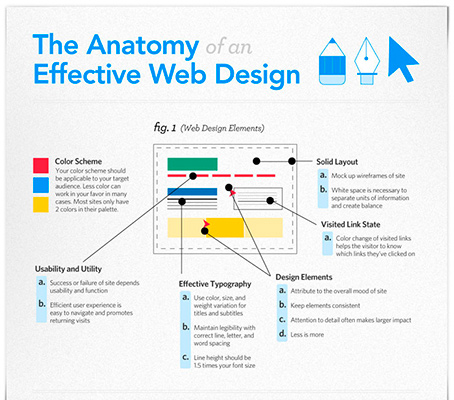Internet Site Design Basics: Tips For Structure A User-Friendly Website
Internet Site Design Basics: Tips For Structure A User-Friendly Website
Blog Article
Post By-Crews Bak
When it pertains to site design, making sure user-friendliness is key. From responsive layout to structured navigation, every aspect plays a crucial function in developing a website that deals with your audience's requirements. Yet what concerning the finer details that can make or break a customer's browsing experience? Stay tuned as we uncover some often-overlooked tips that can boost your web site's functionality to the next degree, making it really attract attention in the electronic landscape.
Relevance of Responsive Style
Receptive style is a critical element of contemporary site growth. Guaranteeing your site is responsive ways that it can adjust to different screen dimensions and devices, offering a smooth experience for users.
With the enhancing use smartphones and tablet computers to access the internet, having a responsive layout is crucial for getting to a bigger audience. It aids in enhancing user experience by making your internet site easy to navigate and keep reading any type of tool.
In addition, receptive style can positively impact your search engine positions, as search engines like Google focus on mobile-friendly sites. By having a responsive style, you're also future-proofing your site, as brand-new tools with varying display dimensions remain to emerge.
Simplify Navigation Framework
To enhance customer experience and help with simple access to info on your web site, improving the navigation framework is paramount. When creating seo search engine ranking , focus on developing a clear and intuitive navigation menu that helps site visitors locate what they're looking for quickly.
Restriction the number of menu items to the essentials, organizing associated pages with each other to avoid overwhelming customers. Use detailed tags that clearly indicate the content of each web page, making it easier for users to recognize where each web link will take them.
Consider carrying out dropdown food selections for subcategories to prevent cluttering the primary navigation bar. In addition, consist of a search bar plainly on the web page for individuals that favor searching for specific info.
simply click the next internet page on mobile responsiveness in your navigating design to ensure easy access on all tools.
Enhance Page Lots Speed
Improving page lots rate is crucial for retaining site visitors on your internet site. Slow-loading pages annoy users and can cause high bounce prices. To optimize page tons rate, start by enhancing photos. Compress photos without jeopardizing quality to reduce their data dimensions.
In addition, enable internet browser caching to keep regularly accessed sources locally, speeding up tons times for returning visitors. Minify CSS, JavaScript, and HTML documents by removing unneeded characters, comments, and formatting, boosting load speed.
Take into consideration using a web content delivery network (CDN) to disperse your site's material across several web servers worldwide, reducing latency for customers accessing your website from various areas. Last but not least, restrict making use of third-party scripts and plugins, as they can considerably influence load times.
Final thought
To conclude, by incorporating receptive layout, streamlining navigation, and maximizing page lots speed, you can develop a straightforward site that appeals to a wider audience and enhances user experience. These essential elements ensure that site visitors can quickly accessibility and navigate your website across various gadgets, leading to enhanced engagement and satisfaction. By focusing on these key facets, you can develop a successful web site that maintains individuals coming back for more.
